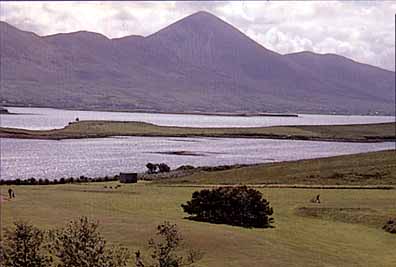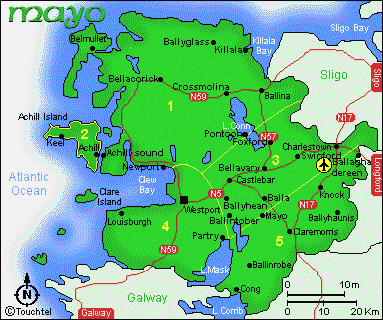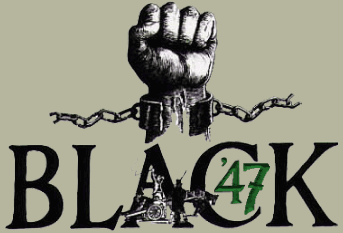Rita Nolan, in her book �Within the Mullet�, her study of the Mullet Peninsula of Northwest Mayo, acknowledges Lavelle as a prominent family. The �Mullet� is part of the Barony of Erris, in the County of Mayo, Kingdom of Connaught. It is about as far West as you can get in Ireland; and is located north of Achill Island, another Lavelle stronghold. Ms. Nolan notes that in the history of Erris, in the year 1180 the � Caithniadh of U� Fiachrach was the �Chief of Erris�. His line is recorded as holding this rank for the next 100 years; at which time they disappear as chieftains. She states, however, that �they remained on in a humbler capacity, and are still here. Meenaghans, Monaghans, Kanes, Lavelles and Gannons are descendants of the ӒCaithniadh's� (Nolan 14).
While our O�Grady [ӒGreadigh] line can be found generously throughout Galway; in this instance, we have documentation that Daniel O�Grady was born and raised in Louisburgh, County Mayo. Our Whalen surname is more commonly found as Whelan or Whealan as Anglicized forms of Gaelic names appear in the late 18th century after English law forced the Irish to dispense with their language, religion and identity. Forms of the Anglicized Lavelle include Melville, Mulvihill, O�Lowell and Lowell. Although it was one of the first countries to do so, it is helpful to remember that surnames in Ireland were, generally, not made hereditary until the 10th century. Back in the 70s, I commissioned a historiography of the Lavelle name as a Christmas present for my Father. Macaulay Mann Heraldry of London confirmed that Lavelle (and even Mulfaal) is an anglicized form of the Irish name ӒMaolfabhail, from �faball� meaning �movement.� It is written that the early Church is the origin of all names starting with �Maol� (meaning bald) and applied to the monks because of their distinctive tonsure. Irish surnames often reflected occupation, appearance or trait of the family. Unlike English surnames, Irish surnames are rarely toponymic, or deriving from the name of the locality.
There were so many factors influencing Irish emigration in the 19th century. Not just famine, but changes in marriage and inheritance patterns which made it impossible for a son to inherit the land of his forefathers, along with the triumph of machine over man, forced many Irish to leave the land of their birth. But disaster first struck Ireland in August of �45 when a killer fungus Phytophthora infestans reduced the potato crop to a watery, stinking mess in the ground (Miller 281). By �Black Forty-Seven� thousands had died from starvation-related diseases. Two years after the potato blight (1845-1849) almost 106,000 Irish immigrated to the United States (Miller 292). |



